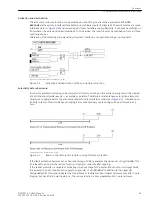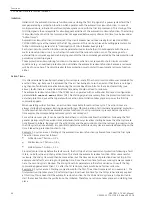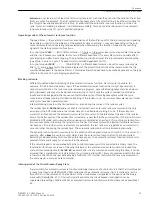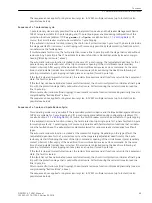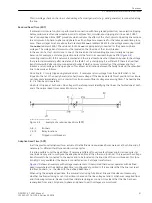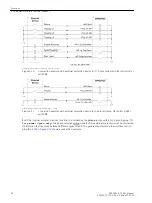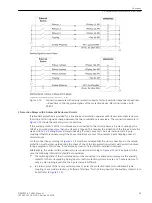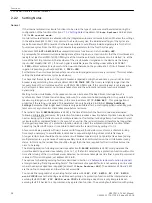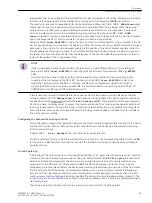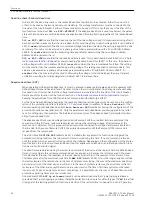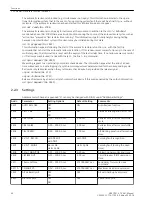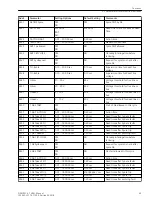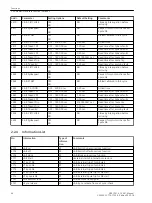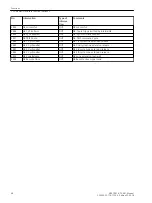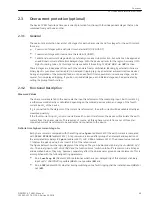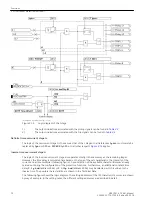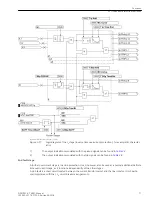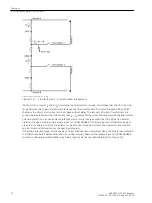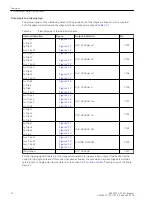
presupposes that a pickup signal of the external device is also connected to the 7VK61; otherwise an evolving
fault can only be detected with the external trip command even if with
with PICKUP
was set here.
The reaction in response to sequential faults can be selected at address 3407.
EV. FLT. MODE
blocks AR
means that no reclosure is performed after detection of a sequential fault. This is always useful when only 1-
pole reclosure is to take place or when stability problems are expected due to the subsequent 3-pole dead
time. If a 3-pole reclose cycle is to be initiated by tripping of the evolving fault, set
EV. FLT. MODE
=
starts 3p AR
. In this case a separately adjustable 3-pole dead time is started with the 3-pole trip command
due to the sequential fault. This is only useful if 3-pole reclosure is also permitted.
Address 3408
T-Start MONITOR
monitors the reaction of the circuit breaker after a trip command. If the CB
has not opened during this time (from the beginning of the trip command), the automatic reclosure is blocked
dynamically. The criterion for circuit breaker opening is the position of the circuit breaker auxiliary contact or
the disappearance of the trip command. If a circuit breaker failure protection (internal or external) is used on
the feeder, this time should be shorter than the delay time of the circuit breaker failure protection so that no
reclosure takes place if the circuit breaker fails.
i
i
NOTE
If the circuit breaker failure protection (BF) should perform a 1-pole TRIP repetition, the time setting of
parameter 3408
T-Start MONITOR
must be longer than the time set for parameter 3903
1p-RETRIP
(T1)
.
To enable that the busbar is tripped by the circuit breaker failure protection without preceding 3-pole
coupling of the trip command (by AR or BF), the time set for 3408
T-Start MONITOR
also has to be
longer than the time set for 3906
T2
. In this case, the AR must be blocked by a signal from the BF to
prevent the AR from reclosing after a busbar TRIP. It is recommended to connect the signal 1494
BF T2-
TRIP(bus)
to the AR input 2703
>AR block
via CFC.
If the reclosure command is transmitted to the opposite end, this transmission can be delayed by the time
setting in address 3410
T RemoteClose
. This transmission is only possible if the device operates with adap-
tive dead time at the Gegenende (address133
Auto Reclose
=
ADT
). This parameter is otherwise irrelevant.
On the one hand, this delay serves to prevent the remote end device from reclosing unnecessarily when local
reclosure is unsuccessful. On the other hand, it should be noted that the line is not available for energy trans-
port until the remote end has also closed. Therefore this delay must be added to the dead time for considera-
tion of the network stability.
Configuring the Automatic Reclosing Function
This configuration concerns the interaction between the protection and supplementary functions of the device
and the auto reclose function. Here you can select which device functions will start the automatic reclosing
function and which not.
Address 3425
AR w/ BackUpO/C
i.e. with time overcurrent protection
For the functions which are to start the automatic reclosing function, the corresponding address is set to
YES
,
for the others to
NO
. The other functions cannot start the automatic reclosing function because reclosing is
not relevant here.
Forced 3-pole trip
If a blocking of the auto-reclosure occurs during the dead time of a 1-pole cycle without a previous 3-pole trip
command, the circuit breaker remains open at one pole. With address 3430
AR TRIP 3pole
it is possible to
determine that the tripping logic of the device issues a 3-pole trip command in this case (pole discrepancy
prevention for the CB poles). Set this address to
YES
if the CB can be tripped 1-pole and if it has no pole
discrepancy protection. Nevertheless, the device preempts the pole discrepancy supervision of the CB because
the forced 3-pole trip of the device is immediately initiated as soon as the reclosure is blocked following a 1-
pole trip or if the CB auxiliary contacts report an implausible circuit breaker state (see also Section
matic reclosure function (optional)
at margin heading “Processing the circuit breaker auxiliary contacts”). The
forced 3-pole trip is also activated when only 3-pole cycles are allowed, but a 1-pole trip is signaled externally
via a binary input.
The forced 3-pole trip is unnecessary if only a common 3-pole control of the CB is possible.
Functions
2.2 Automatic reclosure function (optional)
SIPROTEC 4, 7VK61, Manual
59
C53000-G1176-C159-5, Edition 05.2018
Summary of Contents for SIPROTEC 4 7VK61
Page 8: ...8 SIPROTEC 4 7VK61 Manual C53000 G1176 C159 5 Edition 05 2018 ...
Page 10: ...10 SIPROTEC 4 7VK61 Manual C53000 G1176 C159 5 Edition 05 2018 ...
Page 16: ...16 SIPROTEC 4 7VK61 Manual C53000 G1176 C159 5 Edition 05 2018 ...
Page 176: ...176 SIPROTEC 4 7VK61 Manual C53000 G1176 C159 5 Edition 05 2018 ...
Page 224: ...224 SIPROTEC 4 7VK61 Manual C53000 G1176 C159 5 Edition 05 2018 ...
Page 264: ...264 SIPROTEC 4 7VK61 Manual C53000 G1176 C159 5 Edition 05 2018 ...
Page 270: ...270 SIPROTEC 4 7VK61 Manual C53000 G1176 C159 5 Edition 05 2018 ...
Page 276: ...276 SIPROTEC 4 7VK61 Manual C53000 G1176 C159 5 Edition 05 2018 ...
Page 346: ...346 SIPROTEC 4 7VK61 Manual C53000 G1176 C159 5 Edition 05 2018 ...

